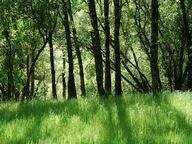As their name suggests, rainforests are present in geographical regions characterized by high
, frequent
, and absence of
. Most of the world's remaining rainforests occur in the tropics, where the consistently high temperatures encourage lush plant growth. There are, however, areas of temperate rainforest that occur in
regions of most continents except Antarctica.
One of the distinctive features of a rainforest is the
structure of its vegetation. The
, the bottom-most layer, receives the least sunlight: it is usually covered with
plant and animal matter. The
hosts abundant plant and animal life, including insects and various predators. It receives about 5% of the sunlight that shines on the
, which is formed by the crowns of large trees growing close together to create a continuous cover. Some particularly tall trees that tower above the rest form the
layer. Each of these layers is inhabited by different plant and animal species
to life in that particular environment.
It is believed that up to 75% of all species of plants, animals and microorganisms on Earth are
to rainforests, and that millions of them are still
. This immense amount of biodiversity, however, is gravely endangered by the devastating effects of deforestation. Rainforest soil is naturally acidic and poor in
, and human intervention may irreversibly alter the delicate balance of these ecosystems. In addition, deforestation may cause rainforests to
more carbon dioxide than they
, with negative consequences on global climate.
